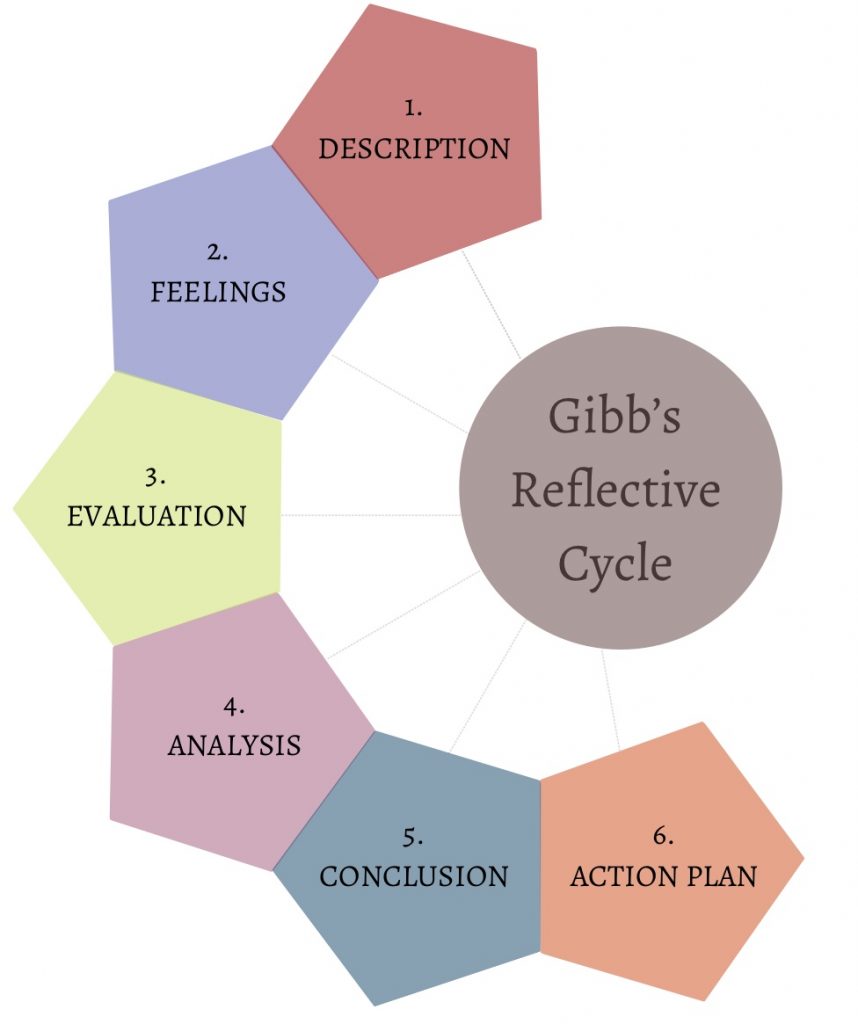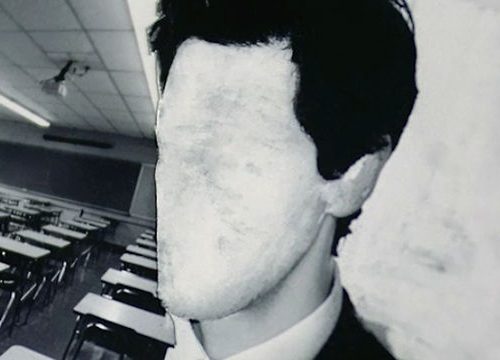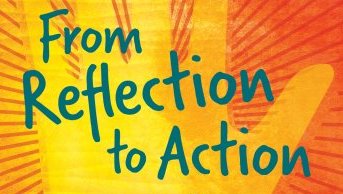Expect the Unexpected

Preparation is key for a lesson to be at its maximum potential. The role of a primary school teacher is to teach a wide range of subjects, not just one. Therefore, every teacher will have set out lesson plans and divided their day into numeracy, literacy and religion while integrating the use of art, ICT and physical education. Having a clear plan for the day, minimises the risk of errors and therefore minimises stress. So just make a daily or weekly lesson plan and you’re ready to go? No.
I was faced with multiple challenges throughout my work placement in St. James’s Primary School. I knew going into it that it wouldn’t be easy, but I didn’t think it would be as hard as it was. There were times when I doubted myself and my chosen career path however, reflecting on my experience, I’m now grateful that I had the opportunity to learn new skills from the obstacles that stood in my way. Throughout this blog I will utilise Gibb’s Reflective Cycle to discuss the challenges I faced in St. James’s as it will provide a basis that I can then develop a full evaluation of my experiences as ‘if the experience has been especially powerful then discussion may never get further than description of what happened or of the feelings associated with the experience’[1], meaning it will keep me on track of creating a full and accurate reflection.
Not the best start to the day…
On one day, the teacher had informed me she wouldn’t be in until lunch time and a substitute teacher would be taking the class for part of the day. However, as it approached 9 O’clock, there was no sign of the sub. I waited patiently in the classroom but as soon as I heard the bell ring, I decided to ring the school office to see what was happening.

Aoife Rafferty, Canva Pictorial Design of Speech Bubble, 2022.
I was asked to watch the class until what I assumed would be half an hour at the latest, but it turns out the sub didn’t arrive until 11 O’clock. Which meant I had to teach the class for two hours. On my own.
I knew how challenging this class could be for their teacher and principal so the fact I was on my own was nerve wracking. According to Hill and Hawke, a definition of what constitutes challenging behaviour ‘depends upon the context in which it occurs and how it is perceived by teachers.’[2] Every teacher will have a different opinion on what challenging behaviour means and some may find situations difficult that others do not. The main reason I was worried was because I had never taken a class of on my own before, especially when I didn’t know how long I needed to teach them.
How bad can it be?
As it was nearing Christmas, I was told to rehearse their Christmas carols with them in the PE hall. Seeing that I’ve had some experience in teaching children nativities and helping them learn songs for a school play, I didn’t think this activity would be so difficult. When we entered the PE hall, I reminded them that they needed to listen to me just as much as they would listen to their own teacher, I also asked them to try their best to not disrupt or mess around whilst rehearsing. The first few songs went well, I was getting more comfortable as we went on. Until jingle bells came along. For this song we used sleigh bells and different percussion instruments. Since I wasn’t aware of who had what instrument, I had to trust the class in telling me who the instruments were assigned to.

Once I handed out the instruments and started the music, I noticed one boy becoming very angry. This child had challenging behaviour, I had encountered similar experiences with him before, but the teacher was always there to take care of the situation. I want to establish that the term ‘challenging behaviour’ is a hugely contested phrase and comes with many different interpretations. In this case I will use the definition according to the New Zealand Government Special Education “2000” policy which proposes that challenging behaviour ‘jeopardises the physical safety of the student or others; threatens to cause or causes significant property damage; and severely limits the student’s access to ordinary settings and interferes with social acceptance, sense of personal well- being and their educational performance’[3]. This is because he started stomping his feet and crying and continued to grab an instrument from another child and throw it across the hall, this then caused an argument between the two. As soon as this happened, I stopped the music and reminded them that the principal’s office was only across the corridor and that they needed to behave if they wanted to continue practicing their Christmas carols or I would send them over to the principal.
So what now..?
Usually at this point, their teacher would deal with the incident, and I could carry on with the rest of the class, but since I was on my own, I wasn’t sure what to do. I decided to remove the boy from the stage and have a private conversation with him at the back of the hall while the rest of the class practiced their songs. This way, I wasn’t leaving anyone unattended while still resolving the conflict. When talking to the boy who threw the instrument, I asked him why he did it in the first place to try to understand his frustration. He told me he was upset that he didn’t get an instrument to play and thought that the other boy ‘didn’t deserve’ his one. After ten minutes of him trying to argue with me, he said sorry to the other boy, but he was still visibly angry. Thankfully, I saw the principal walk past so I asked her if there was anyone who could bring him to the sensory room to calm down, she kindly led him out and sat with him until he was ready to join again and asked a classroom assistant to come in and help with the rest of the lesson.

What if it happens again?
Reflecting on my experience I could’ve dealt with the situation using a more effective approach. Firstly, I would ask the boy to sit on his own for a few minutes or use any of the calming techniques to allow him to calm down before I try talking to him as the ‘‘recovery phase’ following an incident is a risky time to discuss the incident and to start requesting apologies. This is because it is a time when further incidents are highly likely.’[4] If I find myself in a similar situation, I will make sure to employ this method as it is more likely to resolve the conflict effectively and efficiently. Secondly, I would use an approach that would avoid me taking my attention off the whole class as when I went back to working with them, they were not focused and were ‘bored’. This was because I wasn’t paying attention to them and so they didn’t have any direction of, for example, what songs to practice next. Although I have learnt from this experience, it was highly challenging and so to avoid this scenario again, I would simply refuse to take the class on my own and ask for additional help until a sub or teacher arrived, as that was not what I was there to do. It’s safe to say that for the following weeks of my placement, I was certainly expecting the unexpected.
Action Plan

Footnotes
[1] Graham Gibbs, Learning by Doing (Oxford: Oxford Brookes University, 2013), p. 49.
[2]Manpreet Dhaliwal, ‘Teacher perceptions and management of challenging student behaviours in primary school classrooms’, MS thesis, (2013), 1-112 (p. 3).
[3] Ministry of Education, In-service training for teachers in New Zealand Schools (Wellington: Education Review Office, 2000), p. 34.
[4] Llywodraeth Cymru Welsh Government, ‘Practical approaches to behaviour management in the classroom’, A handbook for classroom teachers in primary schools, (2012), 1-107 (p. 35).
Bibliography
Dhaliwal, Manpreet, ‘Teacher perceptions and management of challenging student behaviours in primary school classrooms’, MS thesis, (2013), 1-112
Gibbs, Graham, Learning by Doing (Oxford: Oxford Brookes University, 2013)
Higgins, Jane, How to deal with challenging behaviour in the classroom (2020) <https://cpdonline.co.uk/knowledge-base/safeguarding/how-to-deal-with-challenging-behaviour-in-the-classroom/> [accessed 24 March 2022]
Llywodraeth Cymru Welsh Government, ‘Practical approaches to behaviour management in the classroom’, A handbook for classroom teachers in primary schools, (2012), 1-107
Ministry of Education, In-service training for teachers in New Zealand Schools (Wellington: Education Review Office, 2000)
NASUWT, Lesson Planning (2022) <https://www.nasuwt.org.uk/advice/in-the-classroom/lesson-planning.html> [accessed 10 March 2022].
St. James’s Primary School, St. James’s Primary School and Nursery Newtownabbey (2022) <https://www.stjamesps.co.uk> [accessed 24 March 2022]
The Challenging Behaviour Foundation, Understanding Challenging Behaviour: Part 1 (2022) <https://www.challengingbehaviour.org.uk/understanding-challenging-behaviour/what-is-challenging-behaviour/resource-understanding-challenging-behaviour-part-1/> [accessed 24 March 2022]
Vertis, How Sensory Rooms in Schools can Help Students (2021) <https://www.vertisbuildings.com/blog/sensory-rooms-schools> [accessed 24 March 2022]
You May Also Like

27 March 2022

The Equity Of Detachment
25 March 2022
